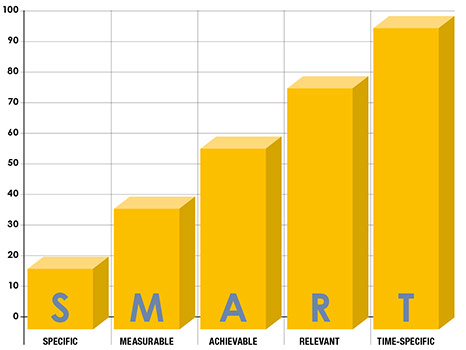Retail consultant Paul Da Silva has some helpful tips on how to work out realistic targets for your business and make sure your staff work together to achieve them.
Whether you’re a managing director, a showroom manager or a kitchen designer, you want to know what your targets are. For many people, their commissions will be linked to targets, so they all want to know what they are.
But how do you set your targets?
Over the years, I have seen many different ways of choosing the magic number. To my mind, there are two main ways of deciding what your goals are for the financial year.
Your target could be based on the number you decide – at the beginning of the year – that you want to achieve. It could be an aspirational number such as £1 million, or it could be double your break-even number.
Usually, the annual number is part of a bigger three- or five-year plan and could form part of a larger project. Sometimes, you have committed these numbers to your business plan, which has been given to stakeholders and the banks in order to finance the showroom, so they need to be as accurate as possible.
Or it could be based on whatever level of growth you want over the previous year. If you want 10% growth on last year, it’s very easy to work out. And finishing your year with double-digit growth on your previous period is very good news – well, in a normal, non-Covid year that is.
Deciding on a target
Obviously, the sales number is the primary focus, but what other key performance indicators (KPIs) should you be looking at?
Firstly, what is your sales target for the month? So, for example, let’s say it’s £100,000. I then look at the average order value – say £12,500. That means you need to sell eight kitchens in the month to hit your target.
But what is your conversion rate? Let’s suppose it is 80%. That means that in order to sell eight kitchens in a month, you need to quote on 10.
Now, how many leads do you get that convert into quotes? Let’s say that, for this example, your lead-to-quote con–version rate is 50%. That means that you need 20 leads to give you 10 quotes and eight sales.
Next, you need to look at your enquiry-to-lead conversion rate. Again, let’s base it on 50%. This allows for the online enquiries that are people looking for a cutlery tray, and the showroom walk-ins who have come in to get out of the rain. That means you now need 40 enquiries for me to hit £100k of sales in a month.
Then think about the average time that it takes to go from enquiry to sale. Maybe six to eight weeks? And so, for you to achieve £100,000 in sales in March, you need 40 enquiries in January.
The numbers can be interchanged to be specific to your business, but the principles are the same.
How to achieve your targets
The most important thing about targets is that the whole business should be aware of what they are and what you are trying to achieve.
I’ve worked with some of the large national retail chains and when I was visiting a branch, during a walk around the warehouse, I would always ask the warehouse staff what the branch’s sales target was for the month. In the successful branches, they knew exactly. In less successful branches, they sometimes didn’t even know there was a target.
They should be discussed regularly and constantly updated on a visible operations board, where people can see what progress is being made.
Once you have your annual number, you then need to break it to down into monthly chunks. When are your big months – January? April? Traditionally, these tend to be better-performing periods due to New Year and Easter sales.
When are your slower months going to be? August, while people are away on holiday? December, while people are paying for Christmas and not wanting to start a project before the break?
And what types of information should you be targeting? I have already mentioned sales, quotes, leads and enquiries, but what else should you be looking at ?
The value of your lead bank is a very important indicator of how you are shaping up for your target number.
If you want to sell 10% more than you did for the same month in the previous year, but your lead bank is 20% less than it was then, you know you are going to be facing an uphill battle. So make sure you are monitoring your outstanding business.
Also, the number of surveys is very important to measure. If, at the end of February, you have carried out 20 surveys in the year so far, but did 30 in the previous year, again you’d know you have some work to do.
To reiterate a very old saying, the targets need to be SMART – Specific, Measurable, Achievable, Relevant and Time-specific. An unrealistic target can have a damaging effect on salespeople and morale in general.
